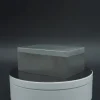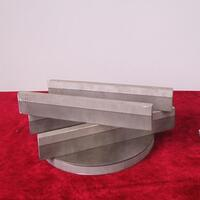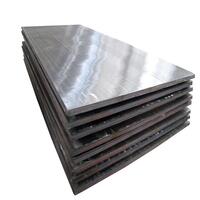1. Introduction
When you hear ‘metal clad,’ you might picture electrical wiring or industrial piping—but one of the most visually striking and technically advanced applications of metal clad is in architecture. From sleek urban skyscrapers to minimalist mountain cabins, metal clad facades are redefining modern design. But what exactly does ‘metal clad’ mean in this context, and why are materials like corten steel siding, zinc clad roofs, and aluminum clad steel gaining traction among forward-thinking architects?

In short, metal clad refers to a composite material where a base metal is bonded—often through roll bonding, explosion cladding, or electroplating—to a more corrosion-resistant or aesthetically desirable metal. This creates clad metals that offer the strength of structural steel with the weather resistance and visual appeal of copper, zinc, or stainless steel.
2. Why Architects Choose Metal Clad Facades
Metal clad walls and metal clad siding aren’t just about looks—they solve real-world challenges. In coastal regions, for example, salt-laden air eats away at standard building materials. That’s where stainless clad aluminum or titanium clad panels shine, offering decades of low-maintenance performance.
Beyond durability, metal clad systems like vertical standing seam metal siding or standing seam facade panels provide clean lines, seamless transitions, and excellent thermal performance—especially when paired with metal clad insulation. Designers also love the material’s adaptability: whether it’s a corrugated steel facade for an industrial loft or a smooth zinc metal siding for a luxury residence, the options are nearly endless.
- Corten steel facade: Develops a rust-like patina that stabilizes over time, eliminating the need for painting.
- Zinc clad dormer: Lightweight, self-healing, and ideal for intricate roof details.
- Copper siding: Ages gracefully to a green patina, often used in heritage-sensitive projects.
- Colorbond standing seam and PAC Clad HWP: Pre-finished systems offering color consistency and long warranties.
3. Advanced Clad Metal Types in Modern Construction

Not all clad metals are created equal. The choice depends on climate, budget, and design intent. For instance, aluminum clad steel combines the formability of aluminum with the rigidity of steel—perfect for metal weatherboard or exterior corrugated metal siding. Meanwhile, PAC Clad column covers and coping systems use high-performance alloys to resist UV degradation and thermal expansion.
In high-corrosion environments, engineers might specify copper nickel clad or inconel 625 weld overlay for critical structural elements. Even electrical components benefit: metal clad electrical wire and aluminum clad wire are common in commercial builds for fire resistance and mechanical protection.
For roofing, options like zinc clad roof, PAC Clad standing seam roof, or even corrugated profiles made from 2024-T3 clad aluminum offer both function and flair. And for those seeking sustainability, many clad systems are fully recyclable—aligning with green building standards like LEED.
4. Cost, Installation, and Real-World Examples
Yes, premium materials like corten siding cost more upfront—corten steel siding cost can range from $8 to $15 per square foot installed—but they often pay off through reduced maintenance and extended lifespan. A steel clad house in a hurricane-prone area, for example, may avoid the frequent repairs typical of wood or vinyl siding.

Installation requires skilled tradespeople familiar with metal expansion joints, fastening techniques, and flashing details. Systems like standing seam siding use concealed clips that allow panels to expand and contract without warping—a must in regions with wide temperature swings.
Real-world projects showcase the versatility of metal clad. Think of the dramatic corten steel plate walls of a museum in the desert Southwest, or a sleek office building wrapped in a stainless steel metal plate facade that reflects the sky. Even modest structures like a metal clad shed can achieve architectural distinction with the right material choice—say, 3mm aluminium checker plate for a modern utility aesthetic.
5. Beyond Aesthetics: Technical Benefits of Clad Metals
The clad metal meaning extends far beyond surface beauty. In structural applications, clad steel—such as aluminum clad stainless steel or stainless clad aluminum—offers the best of both worlds: the load-bearing capacity of carbon steel with the corrosion resistance of stainless. This is critical in bridges, marine platforms, and chemical processing plants.
Similarly, boiler plate steel with a chrome carbide overlay resists abrasion in high-wear industrial settings. And in electronics, cu clad wire (copper-clad wire) ensures excellent conductivity while maintaining mechanical strength.
Even niche products like nickel sulfamate-plated brass plates for engraving or electroless nickel-coated mild steel plate find roles in specialized manufacturing—proving that clad metals are as functional as they are fashionable.
6. Conclusion
From the zinc clad dormer on a boutique hotel to the corrugated steel facade of an urban art gallery, metal clad is far more than a buzzword—it’s a smart, sustainable, and stunning solution for tomorrow’s buildings. Whether you’re specifying a steel clad building, designing a metal clad house, or simply curious about clad metal meaning, one thing is clear: in architecture, metal clad isn’t just covering surfaces—it’s shaping the future.
Our Website founded on October 17, 2012, is a high-tech enterprise committed to the research and development, production, processing, sales and technical services of ceramic relative materials such as What. Our products includes but not limited to Boron Carbide Ceramic Products, Boron Nitride Ceramic Products, Silicon Carbide Ceramic Products, Silicon Nitride Ceramic Products, Zirconium Dioxide Ceramic Products, etc. If you are interested, please feel free to contact us.
